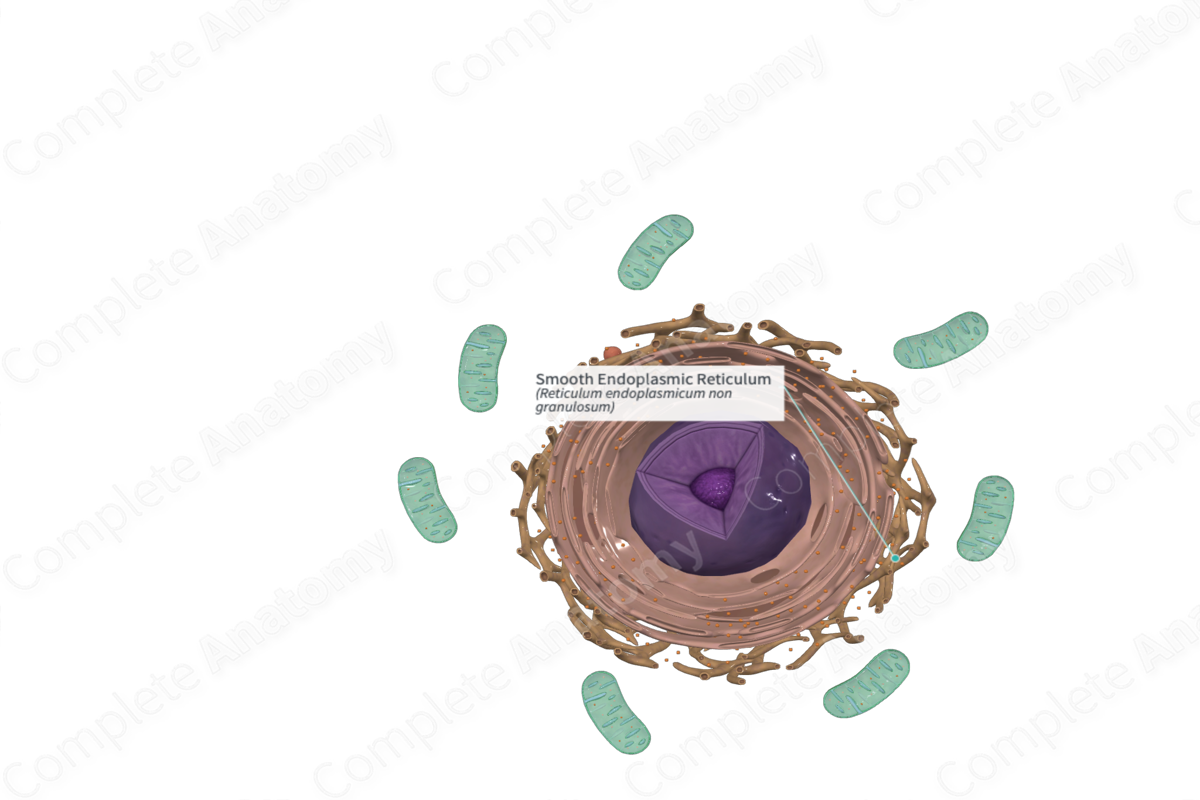
Smooth Endoplasmic Reticulum
Reticulum endoplasmicum non granulosum
Read moreQuick Facts
The smooth endoplasmic reticulum is a region of the endoplasmic reticulum composed of tubular elements lacking ribosomes and associated with many metabolic processes, including carbohydrate metabolism, the synthesis of lipids, cholesterol, and carbohydrates, and drug metabolism (Dorland, 2011).
Structure and/or Key Features
Smooth endoplasmic reticulum is a network of interconnected membranous tubules and vesicles. It may be an extension of the rough endoplasmic reticulum or, be located separately. It’s also called agranular endoplasmic reticulum, because it has no ribosomes associated with it. In skeletal muscle cells and cardiomyocytes (cardiac muscle cells), the smooth endoplasmic reticulum is known as sarcoplasmic reticulum (Ross and Pawlina, 2006; Ovalle, Nahirney and Netter, 2013; McKinley, O'Loughlin and Pennefather-O'Brien, 2016).
Anatomical Relations
The smooth endoplasmic reticulum is continuous with the rough endoplasmic reticulum.
Function
Smooth endoplasmic reticulum (sER) makes fatty acids, phospholipids, and steroids. The sER also contains a collection of enzymes that degrade toxic substances, drugs, and alcohol. It metabolizes glycogen and is involved with cell membrane production and recycling.
Sarcoplasmic reticulum (i.e., sER in skeletal muscle fibers and cardiomyocytes) stores and releases Ca2+.
Clinical Correlates
If the endoplasmic reticulum is stressed, it may activate the “unfolded protein response” (UPR) due to abnormal proteins accumulating within the cistern of the endoplasmic reticulum. The UPR attempts to restore normal function by the endoplasmic reticulum but dysfunction of the UPR can lead to a number of neurodegenerative diseases (Ovalle, Nahirney and Netter, 2013).
References
Dorland, W. (2011) Dorland's Illustrated Medical Dictionary. 32nd edn. Philadelphia, USA: Elsevier Saunders.
McKinley, M. P., O'Loughlin, V. D. and Pennefather-O'Brien, E. E. (2016) Human Anatomy. 5th edn.: McGraw-Hill Education.
Ovalle, W. K., Nahirney, P. C. and Netter, F. H. (2013) Netter's Essential Histology. ClinicalKey 2012: Elsevier Saunders.
Ross, M. H. and Pawlina, W. (2006) Histology: A text and atlas. Lippincott Williams & Wilkins.
